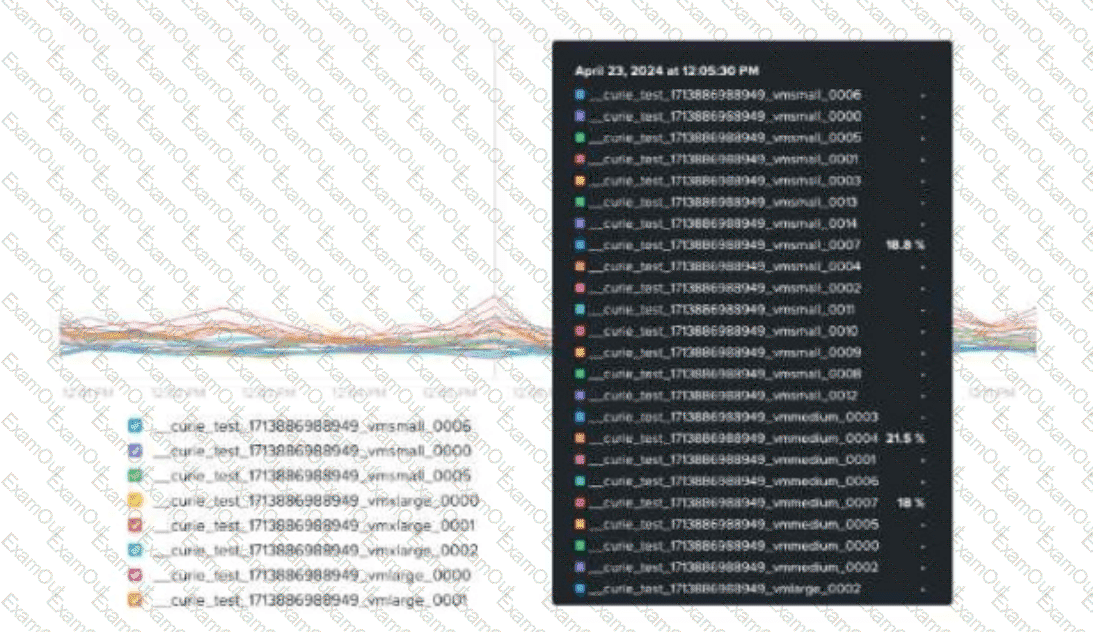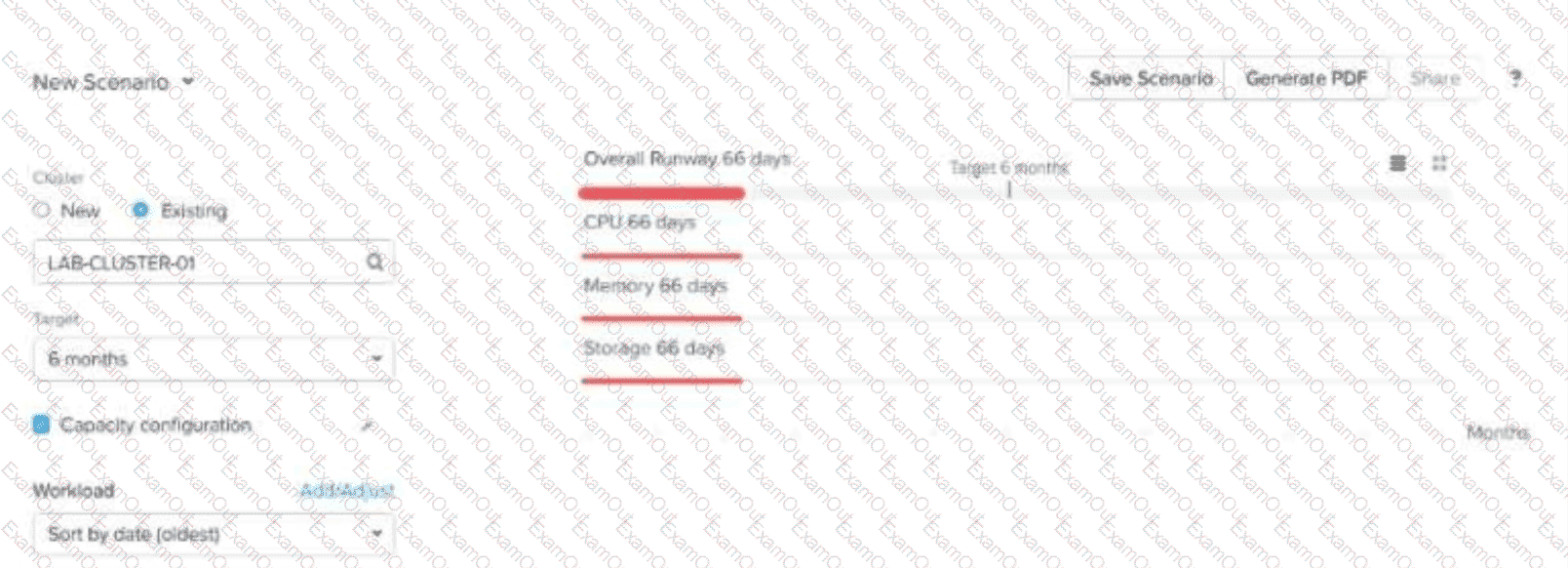An administrator is trying to troubleshoot the environment after NCC raised an alert:
Detailed information for remote_site_connectivity_check: Node x.x.x.x:
WARN: Failed to connect to the remote site
Which two steps should an administrator follow to provide a solution? (Choose two.)
A Disaster Recovery administrator has setup a Protection Policy for 50 workloads - all configured in a similar fashion in terms of OS, storage, network, and performance. The RPO is 60 minutes with a specified retention of 10 copies local, 5 copies remote, and crash consistency.
After configuring the Protection Policy and activating it, the administrator has noticed that recovery points are not showing up in DR. Yet, everything within the Protection Policy looks correct and recovery points are showing up on production side.
What is the most likely issue?
An administrator receives complaints about VM performance.

After reviewing theVM’s CPU Ready Timedata shown in the exhibit, which step should the administrator take to diagnose the issue further?
Within Intelligent Operations, Capacity Configurations have been set to Auto Detect for Reserve Capacity For Failure.
For an RF2 cluster with 10 nodes, what effect does this have on Capacity Runway?
The customer expects to maintain a cluster runway of 9 months. The customer doesn’t have a budget for 6 months but they want to add new workloads to the existing cluster.

Based on the exhibit, what is required to meet the customer's budgetary timeframe?
An administrator is tasked with ensuring the resiliency of Tier-1 workloads. As such, the administrator creates a Protection Policy with a crash-consistent snapshot period that meets RPO while maintaining 10 recovery points locally and 5 at DR location.
Since it is difficult to quantify how long a DR event will last, management wants the Tier-1 workloads to always have 10 recovery points locally.
How can this be achieved logically and most efficiently?
Whichfeaturedeploys atemporary VMthat allows an administrator to log in andapply OS patches to a VM template?
An administrator needs to perform anLCM upgradeon anAHV host with GPUs.
What additional step is required before upgrading the host?
A user created areportin theIntelligent Operations Analysis Dashboardbut forgot to download it. However, after logging back into Prism Central, the administrator finds that thereport is no longer available.
What is the most likely cause?
Which task should be performed first when upgrading host memory?

